
Transport in Denmark is developed and modern. The motorway network covers 1,111 km while the railway network totals 2,667 km of operational track. The Great Belt Fixed Link connecting the islands of Zealand and Funen and the New Little Belt Bridge connecting Funen and Jutland greatly improved the traffic flow across the country on both motorways and rail. The two largest airports of Copenhagen and Billund provide a variety of domestic and international connections, while ferries provide services to the Faroe Islands, Greenland, Iceland, Germany, Sweden, and Norway, as well as domestic routes servicing most Danish islands.
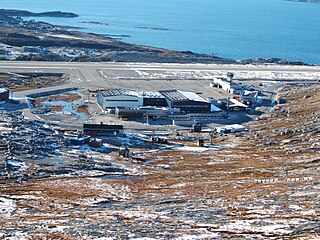
The transportation system in Greenland is very unusual in that Greenland has no railways, no inland waterways, and virtually no roads between towns. Historically the major means of transportation has been by boat around the coast in summer and by dog sled in winter, particularly in the north and east. Nowadays air travel, by helicopter or other aircraft, is the main way of travel.
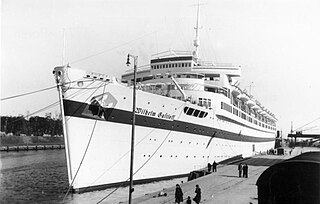
MV Wilhelm Gustloff was a German military transport ship which was sunk on 30 January 1945 by Soviet submarine S-13 in the Baltic Sea while evacuating civilians and military personnel from East Prussia and the German-occupied Baltic states, and German military personnel from Gotenhafen (Gdynia) as the Red Army advanced. By one estimate, 9,400 people died, making it the largest loss of life in a single ship sinking in history.

The modes of transport in Iceland are governed by the country's rugged terrain and sparse population. The principal mode of personal transport is the car. There are no public railways, although there are bus services. Transport from one major town to another, for example Reykjavík to Akureyri, may be by aeroplane on a domestic flight. The only ways of getting in and out of the country are by air and sea. Most of the country's transport infrastructure is concentrated near the Capital Region, which is home to 64% of the country's population.
Holland America Line is a US-owned cruise line, a subsidiary of Carnival Corporation & plc headquartered in Seattle, Washington, United States.

Loftleiðir HF, internationally known as Icelandic Airlines or Loftleiðir Icelandic, was a private Icelandic airline headquartered on the grounds of Reykjavík Airport in Reykjavík, which operated mostly trans-atlantic flights linking Europe and America, pioneering the low-cost flight business strategy on these routes.
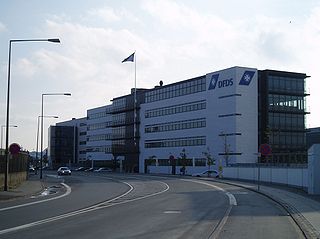
DFDS is a Danish international shipping and logistics company. The company's name is an abbreviation of Det Forenede Dampskibs-Selskab. DFDS was founded in 1866, when C.F. Tietgen merged the three biggest Danish steamship companies of that day.

The Port of Portland is a seaport located in Portland, Maine. It is the second-largest tonnage seaport in New England as well as one of the largest oil ports on the East Coast. It is the primary American port of call for Icelandic shipping company Eimskip.
MV Vikartindur was a German registered 8,633 ton container ship that became stranded on a beach on the south coast of Iceland on March 5, 1997, while en route from Tórshavn, the capital of the Faroe Islands, to Reykjavík.

SS Orduña or Orduna was an ocean liner built in 1913–14 by Harland and Wolff in Belfast for the Pacific Steam Navigation Company. After two voyages she was chartered to Cunard Line. In 1921 she went to the Royal Mail Steam Packet Company, then being resold to the PSNCo in 1926. Her sister ships were Orbita and Orca.
MV Atheltemplar was a motor tanker built by Lithgows, Port Glasgow. She was launched on 15 April 1930, registered in Liverpool and operated by the United Molasses Co Ltd of London. She was transferred to Athel Lines on 1 January 1940.

Norröna is the Faroes' largest ferry. It sails between Hirtshals, Denmark to Tórshavn, the Faroe Islands and Seyðisfjörður, Iceland.
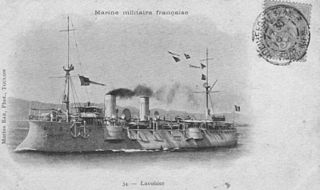
Lavoisier was a protected cruiser of the French Navy built in the 1890s, the third and final member of the Linois class. Ordered as part of a large construction program aimed at countering the fleets of France's rivals, the Linois class was intended for use with France's fleets in home waters and in the French colonial empire. Lavoisier was armed with a main battery of four 138.6 mm (5.5 in) guns, was protected by an armor deck that was 40 mm (1.6 in) thick and she had a top speed of 20.5 knots.

HMT Empire Windrush, originally MV Monte Rosa, was a passenger liner and cruise ship launched in Germany in 1930. She was owned and operated by the German shipping line Hamburg Süd in the 1930s under the name Monte Rosa. During World War II she was operated by the German navy as a troopship. At the end of the war, she was taken by the British Government as a prize of war and renamed the Empire Windrush. In British service, she continued to be used as a troopship until March 1954, when the vessel caught fire and sank in the Mediterranean Sea with the loss of four crewmen. HMT stands for "His Majesty's Transport" and MV for "Motor Vessel".
TS Pretoria was a ship that had a long and varied career as first a German cargo liner, then a U-boat depot ship, hospital ship, British troop ship, Muslim pilgrim ship and finally an Indonesian naval accommodation ship.

The MVSerenade was a French ocean liner and later cruise ship, operating until 2008 when she was sold for scrap.
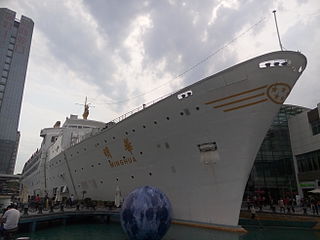
Minghua, formerly MVAncerville, is a 1962 French liner later converted to a cruise ship. Now landlocked, she is the centerpiece of the Sea World development in Shekou, Shenzhen, China.

SS Hebrides was a passenger and cargo ship which operated in the Western Isles of Scotland. Built in 1898 for John MacCallum, she became part of the fleet of David MacBrayne, serving St Kilda until 1955.
Thuringia was an 11,251 GRT ocean liner that was built in 1922 by Howaldtswerke, Kiel, Germany for the Hamburg Amerikanische Paketfahrt AG, Hamburg. In 1930, she was renamed General San Martin. In 1934, she was chartered by Hamburg-Südamerikanische Dampfschiffahrts-Gesellschaft and sold to them in 1936. She was requisitioned by the Kriegsmarine in 1940 and served until 1945 as a barracks ship, and then as passenger ship during the evacuation of civilians from the Baltic.

HMS Rover was a Royal Navy Cruizer-class brig-sloop laid down in 1804 but not launched until 1808. She served in the North Sea, off the north coast of Spain, in the Channel, and on the North American station. She captured two letters-of-marque and numerous merchant vessels before being laid-up in 1815. She then sat unused until she was sold in 1828. She became a whaler that made four voyages to the British southern whale fishery between 1830 and 1848. She was last listed in 1848.

















